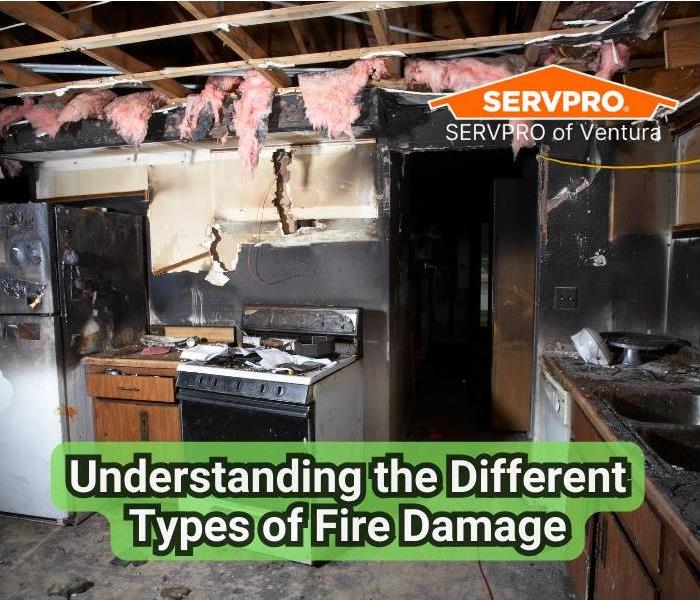Different Types of Fire Damage: A Guide by SERVPRO of Ventura
9/18/2023 (Permalink)
When a fire strikes a property, it leaves behind more than just ash and charred debris. The aftermath of a fire can vary, causing different types of damage that require specific cleaning and restoration approaches. SERVPRO of Ventura, with its years of experience in fire damage restoration, offers a detailed look into the various types of fire damage and how they impact homes and businesses.
1. Surface Damage
This is the most visible type of damage. Surface damage is what you see first: charred walls, burned furniture, melted plastics, and the blackened remains of various items. This is the damage that most people associate with fires. While it may seem purely cosmetic, it's essential to address surface damage promptly to prevent further degradation of materials and structures.
2. Smoke and Soot Damage
Even if the flames don't touch certain areas, smoke and soot can. These residues can cover everything in a room, from the ceiling and walls to furniture and personal items. There are different types of soot residues:
- Wet Smoke Residues: Resulting from slow-burning, low-heat fires, they leave a sticky, smeary mess.
- Dry Smoke Residues: Caused by fast-burning, high-heat fires, they're often powdery and dry.
- Protein Residues: Virtually invisible but can discolor paints and varnishes, these residues have a strong, unpleasant odor.
- Fuel/Oil Residues: Rare in house fires but can be a result of furnace puff backs.
3. Water and Moisture Damage
Ironically, in the process of putting out fires, properties can sustain water damage. Firefighting efforts can lead to soaked carpets, water-logged furniture, and structural damage. If not treated quickly, this can lead to mold growth, further complicating the restoration process.
4. Heat Damage
Heat can warp, melt, and discolor materials even without direct contact with flames. Items like appliances, electronics, and metals can undergo structural changes due to the intense heat of a fire. It's important to assess these items for safety and functionality after a fire incident.
5. Odor Damage
One of the most lingering effects of a fire is the odor. This isn't just the smell of burned materials; it can also come from smoke, soot, and even the water used to extinguish the flames. Proper deodorization is essential to fully restore a property to its pre-fire condition.
6. Hidden Damages
After a fire, there might be damages that aren't immediately visible. This can include damage within walls, behind cabinets, or under floors. Electrical systems, plumbing, and HVAC systems can all be impacted, even if they seem to be functioning normally at first.
Every fire damage scenario is unique, but with a systematic approach and deep expertise, SERVPRO of Ventura ensures that all affected areas are identified and treated. Our trained professionals employ advanced equipment and techniques, from air scrubbers to ozone treatments, ensuring that your property is restored to its former glory.






 24/7 Emergency Service
24/7 Emergency Service
